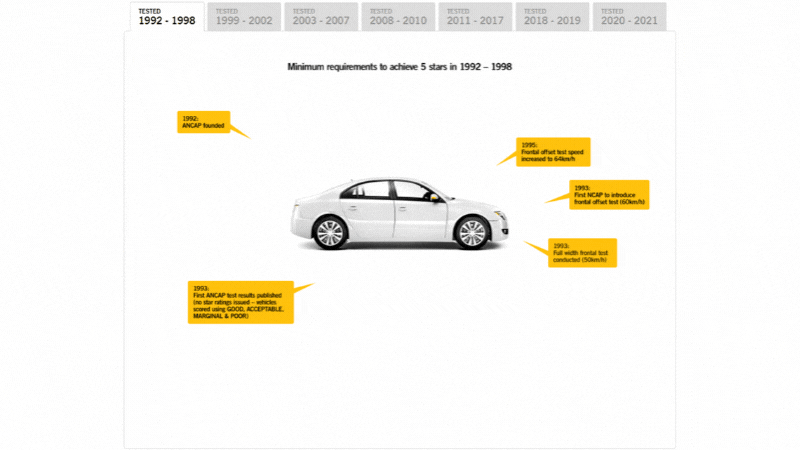Role
Industry
Solutions
Products
We often talk about how the approach to fleet vehicles should be the same as for a place of work. Any time an employee gets into a vehicle to travel to a meeting, visit a client, or pick up a colleague from the airport, they are effectively stepping into a mobile extension of your workplace. With this in mind, it’s important for organisations to make sure that the vehicles used on a daily basis are as safe as possible, something made simpler with a comprehensive fleet management solution.
According to recent data, 37% of workplace deaths in New Zealand, and 65% of workplace deaths in Australia involve vehicles. In Australia, 47% of workplace deaths are due to vehicle collisions on a public road. Combine these statistics with the fact that 20% of fleet vehicles are involved in some form of accident annually, and there is a high likelihood that a fleet vehicle will be involved in a serious or fatal crash. These grim statistics highlight the need for organisations to proactively approach safety around vehicles, just as we do for safety on work sites and in the office.

One avenue worth pursuing to reduce the likelihood of accidents is driver behaviour. If you know how each driver in your organisation is performing, you can identify risky behaviour and proactively implement training and support to those individuals. It is imperative that organisations do everything in their power to provide as safe a workplace as possible and Smartrak’s Dashboards, reports and telematics solutions provide a way to easily track and address risky driving behaviour.
Another option worth adopting that will compliment a solid driver behaviour management strategy is choosing the safest vehicles possible.
Since its founding in 1992, the Australasian New Car Assessment Program (ANCAP) has produced safety ratings for passenger vehicles entering the Australian and New Zealand markets. ANCAP provides a star rating on each vehicle, giving consumers a simple way to rank relative vehicle safety when making a purchase.
A vehicle’s ANCAP rating should have a direct impact on fleet decision making. While there are multiple considerations when choosing vehicles, including budget, vehicle purpose, and how vehicles sit within the larger fleet strategy, there is also an obvious need to include safety in selection criteria.
The thing to understand about ANCAP safety ratings is that the testing process is constantly evolving. As manufacturers develop and introduce new safety features, the bar that a vehicle must clear in order to be considered ‘five-star’ inevitably rises. Consequently, a vehicle that was rated five-stars in 2010 would not receive the same rating today.

What this effectively means is that as your fleet ages, the relative safety of your vehicles diminishes. Compared to new vehicles entering the market your fleet vehicles will not be considered as safe. Circling back to the notion that an organisation should be doing everything in its power to ensure the safest possible workplace, it becomes clear that organisations should rotate vehicles regularly with the goal of enhancing employee safety while minimising costs related to wear and tear.
As you can see, it is vitally important to ensure you’re selecting the safest vehicles possible for your fleet. But it’s also just as crucial to make sure your fleet is staying up to date with current safety standards. While it is possible to do this manually, a fleet management solution will streamline the process.
A fleet management solution can help make sure your organisation stays up to date with fleet safety standards by automatically tracking the age of each vehicle. Tracking vehicle ages allows you to set annual thresholds for when vehicles need to be replaced. This replaces the admin burden of manually tracking the age of each vehicle with software-based alerts and notifications.
Setting up regular notifications to review your vehicles provides a circuit breaker to identify which vehicles are no longer up to your organisation’s safety standards and need to be de-fleeted and replaced. This ensures that your fleet is always as safe as it can be.